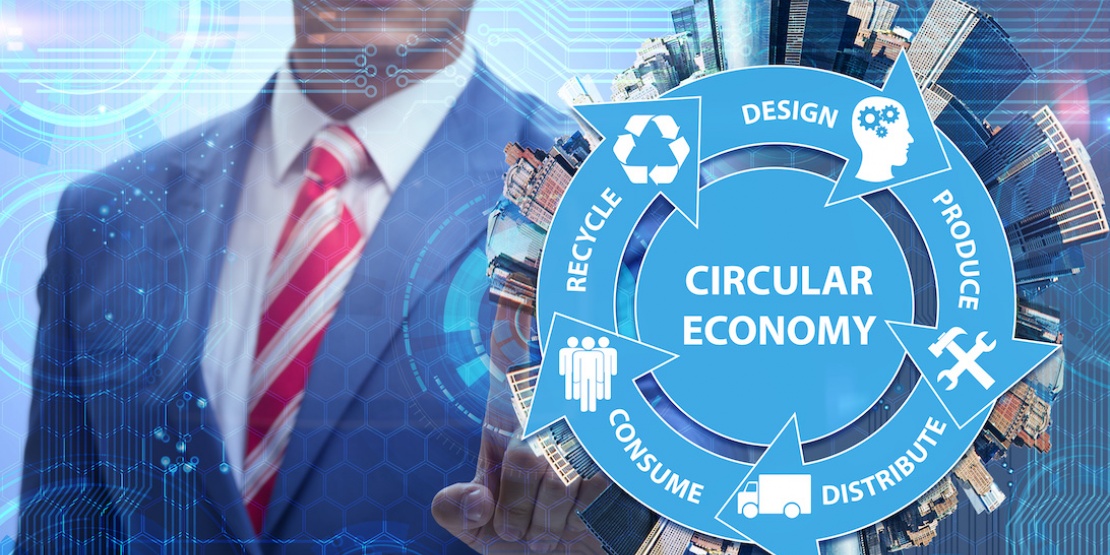In the current climate and inflation crisis, opting for circular economy and collaboration is becoming an obvious choice. This principle combines the best of both worlds: Resources are optimised and peers collaborate to create a new mode of sustainable and environmentally friendly consumption. Businesses are gradually taking an interest in this model, with all the challenges it entails.
What is the circular economy and collaboration model?
Originally, the circular economy and collaboration were based on two very different concepts.
Definition of the circular economy
The circular economy refers to a mode of production and consumption of goods and/or services that promotes the streamlining of resources (raw materials, as well as energy and water), helping to reduce waste, not to mention creating social value.
This model is defined by the United Nations as follows: "Its ultimate aim is to disconnect economic growth from the depletion of natural resources by creating innovative products, services, business models and public policies, taking into consideration all flows throughout the life of the product or service. This model is based on the optimum use of resources and on creating positive value loops."
The circular economy, which opposes the existing "throwaway" system, has several areas of activity:
- Sustainable procurement;
- Eco-design;
- Better waste management;
- Sale and/or purchase of second-hand products;
- Etc.
Definition of collaboration
Also called “the collaborative economy”, this type of collaboration is based on individuals sharing or exchanging goods, services and even knowledge. These business models are based on peer-to-peer collaboration, emphasising use over ownership. This may involve monetary exchange (selling, renting, providing services), but it does not have to (bartering, donating, volunteering).
This large-scale networking process has been enabled through the digital revolution, starting with the advent of the Internet. These communities were formed and collaborative consumption was developed through the use of secure digital platforms.
This socio-economic model operates in many lines of business:
- Housing (renting, flat sharing, flat exchanges, etc.);
- Transport (rental, carpooling, etc.);
- Helping people (tutoring, pet sitting, etc.);
- Food (donations, direct sales, bulk buying, etc.);
- Fashion (second-hand, exchange, rental, etc.).
The circular economy and collaboration approach combines these two models with the aim of pooling, sharing and reusing both material and immaterial resources. It echoes industrial and territorial ecology, one of the pillars of the circular economy, but takes it much further. Although it is a relatively recent development, this unique model is very appealing to companies.
Why opt for the circular economy and collaboration model?
The circular economy, combined with collaboration, can be a source of innovation, value creation and competitiveness for companies. By adopting this dual perspective, they can optimise the use of their resources while relying on their ecosystem.
One thing is certain, the circular economy has to be designed communally. Because it is a complete paradigm shift, collective intelligence and action are required to be able to handle the multiple challenges and transversal problems of the current era (global warming, resource scarcity, etc.).
Economic players must foster discussion and collaboration to design and build the necessary solutions, not only with their suppliers, peers and customers, but also with governments. Stakeholders across the entire value chain must be mobilised. A multinational company, however powerful it may be, cannot set up a waste recycling system on its own. It needs to cooperate with other industry players.
This dynamic is achieved by exchanging flows, i.e. materials, as well as energy, knowledge or skills. Practically speaking, this could take the form of strategic research and development partnerships, notably between a group of companies and research institutes. Non-governmental organisations can also unite stakeholders over an issue or ask them to support virtuous initiatives.
New models with emerging issues
These innovative business models are disrupting existing markets and raising new challenges.
Informing, reassuring and protecting every stakeholder in the chain
Sustainable consumption and production models are particularly innovative. To facilitate these approaches, all those involved must be given maximum transparency and guarantees. This applies to manufacturers right through to end customers. Collaborative work can only function if there is a climate of trust and a common vision beforehand. It is therefore important to build a network of responsible players who share a number of challenges and goals.
Supporting these new virtuous initiatives
Circular and collaborative initiatives often lack the means to reach their goals, which makes it difficult for them to develop, scale up and sustain themselves in the long term. This is why it is the responsibility of public and private players to support the structures behind such an approach, which are often start-ups. They may need help in adjusting their business models, raising funds or attracting customers, for example.
Achieving a win-win situation
The solutions implemented must be “a win” for everyone. This is the key principle of the circular economy: Everyone must gain from an environmental, social and economic point of view. This is especially true for the circular economy and collaboration model which involves many stakeholders. Each of them must find a way to benefit from this approach, even if this is not always easy, as each party’s interests, particularly their economic interests, may diverge. Ensuring everyone benefits from it is what guarantees that these projects will be successful in the long term.
The circular economy and collaboration model has a bright future ahead of it. These two complementary approaches, based on product life extension and collaboration, remain a great means of accelerating sustainable development.
The vast majority of companies have already started their ecological transition through implementing a CSR (corporate social responsibility) strategy. By committing themselves collectively, they will be able to take this even further, reducing their environmental impact without neglecting their economic interests.
- Download our “Procurement policy and CSR” white paper









